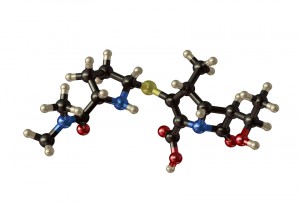
But the reservoir of natural products with the potential to act as antibacterial drugs has not yet been exhausted. In contrast to general thinking by drug companies, screening for such products may well still have a bright future” Nature News and Views: “Antibiotic resistance: To the rescue of old drugs” Meziane-Cherif & Courvalin, Nature 510, 477–478.
The emergence of bacteria that are resistant to antibiotics has been an object lesson in the relentlessness of natural selection; the moment a new antibiotic is developed and introduced, the countdown to the emergence of resistance begins. The race to keep the one step ahead of emerging resistance mechanisms has been going on since antibiotics were first introduced.
The history of the development of penicillin and related antibiotics is both an illustration of the ingenuity of scientists and of the never-ending nature of this battle with emerging resistance. The Nature paper is the latest installment in that story. Continue reading “Hope for Treatment of Carbapenem-Resistant Bacteria”
